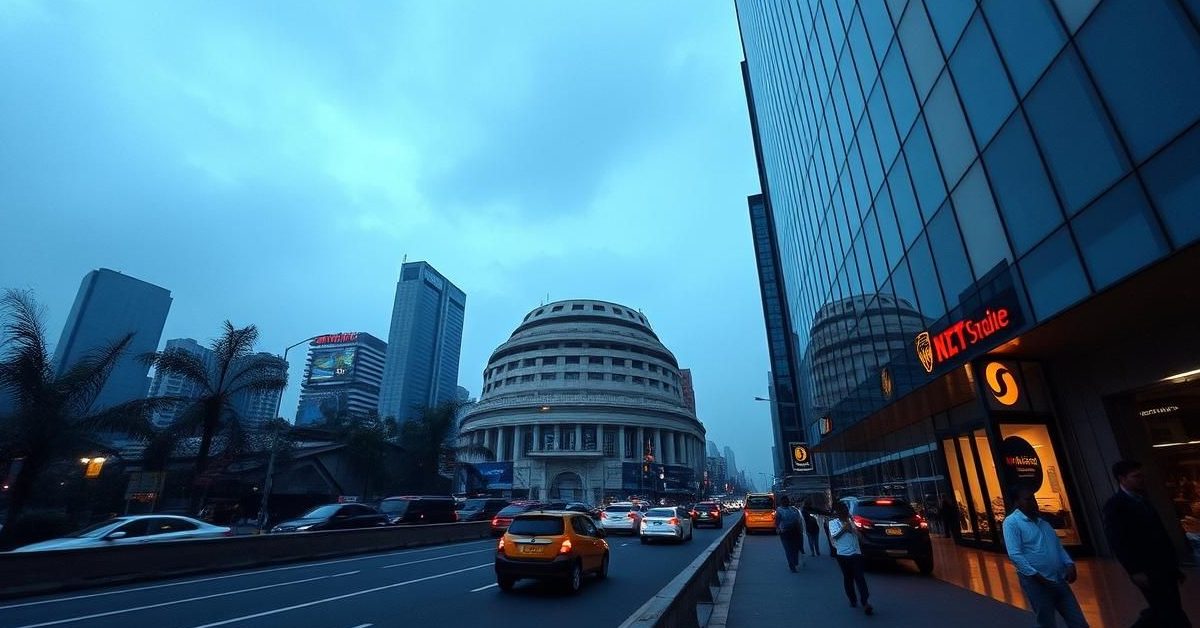Global Tensions Cast a Shadow on Indian Equities
A palpable tremor swept through Dalal Street on Monday, as India’s benchmark equity indices registered significant declines. The pervasive unease, directly stemming from escalating geopolitical tensions in the Middle East and the ensuing surge in global crude oil prices, prompted a broad-based sell-off. Investors, grappling with heightened uncertainty, chose caution, leading to a noticeable retreat across various sectors of the market. This immediate reaction underscored the interconnectedness of global affairs and domestic economic sentiment.
Sensex and Nifty: A Day of Retreat for Indian Benchmarks
The flagship BSE Sensex, often considered the barometer of India’s economic health, concluded the trading day down a sharp 511.38 points, or 0.62 per cent, settling at 81,896.79. Simultaneously, the broader National Stock Exchange (NSE) Nifty 50 index experienced a similar downturn, shedding 0.56 per cent and closing decisively below the psychologically significant 25,000-mark. The decline was widespread, indicating that the prevailing headwinds were influencing a vast spectrum of companies listed on the Indian bourses, from large-cap behemoths to mid and small-cap players.
The Middle East Crucible: Fueling Market Jitters
At the heart of Monday’s market apprehension was the unsettling drumbeat of conflict emanating from the Middle East. Reports of a US strike on Iranian nuclear sites immediately ignited fears of a wider regional conflagration. Such geopolitical flashpoints inherently inject volatility into global financial markets, as they threaten stability, disrupt supply chains, and create unpredictable scenarios. The prospect of prolonged tension between major global powers and key oil-producing nations left investors deeply concerned about the future trajectory of international trade and energy security. The intricate geopolitical chessboard, with players like the United States and Iran, directly impacted risk appetite across asset classes.
Crude Awakening: How Soaring Oil Prices Inflate Market Woes
Directly linked to the Middle East turmoil was the sharp ascent in global crude oil prices. As a net importer of crude, India’s economy is particularly vulnerable to fluctuations in international oil benchmarks like Brent Crude. A sustained rise in prices translates directly into a higher import bill, potentially widening the nation’s current account deficit. More critically for the common citizen and businesses, it fuels domestic inflation. Increased fuel costs translate to higher transportation expenses for goods, impacting manufacturing, logistics, and eventually, consumer prices across the board. This inflationary pressure often forces central banks, like the Reserve Bank of India, to consider tighter monetary policies, which can further dampen economic growth.
Navigating the Volatility: Investor Sentiment and Future Outlook
The confluence of geopolitical instability and inflationary pressures fostered a pervasive “risk-off” sentiment among market participants. Foreign Institutional Investors (FIIs), often key drivers of Indian equity markets, tend to become net sellers during periods of heightened global uncertainty, preferring to shift capital to safer havens such as gold or the US dollar. Domestic Institutional Investors (DIIs) might provide some counter-balance, but the sheer weight of global risk aversion often dominates. The immediate future for the Sensex and Nifty appears to hinge on developments in the Middle East and the trajectory of crude oil. Any de-escalation could provide relief, while further escalation might prolong the current phase of volatility.
Sectoral Shifts and the Wider Economic Horizon
The impact of these global events was not uniform across all sectors. Industries heavily reliant on crude oil, such as aviation, paints, and certain manufacturing segments, felt an immediate pinch due to rising input costs. Conversely, defensive sectors like pharmaceuticals or fast-moving consumer goods (FMCG) might demonstrate more resilience in uncertain times, as their demand is relatively inelastic. The banking sector, while seemingly insulated, could face indirect pressure if inflation prompts the RBI to hike interest rates, potentially affecting lending growth. The broader economic horizon remains complex, with India’s growth narrative needing to contend with these external shocks while leveraging its strong domestic demand.
Beyond the Dip: India’s Economic Resilience in a Turbulent World
While Monday’s market fall undoubtedly sent ripples of concern, it is crucial to view such dips within the context of India’s long-term economic resilience. The Indian economy, characterized by robust domestic consumption and ongoing structural reforms, has demonstrated its ability to navigate global headwinds in the past. However, the path ahead will require vigilant monitoring of geopolitical developments and agile policy responses to mitigate the impact of external shocks. For investors, understanding these macro drivers and adopting a patient, long-term perspective will be key to weathering the current storm and potentially capitalizing on future opportunities.












